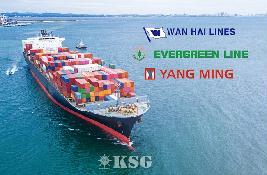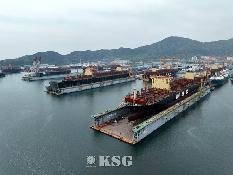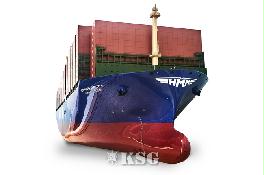2022-11-29 08:59
Port of Hamburg Handles 91.8 Million Tons of Seaborne Cargo

In the first nine months of the year the maritime industry in the Port of Hamburg handled 91.8 million tons of seaborne cargo, a 4.3 percent drop on the previous year. Also down 7.4 percent at 27.5 million tons, handling of bulk cargo was especially hard hit. In comparison with the rest of Europe, container handling held up well.
At 6.3 million TEU - 20-ft standard containers - for the Port of Hamburg the downturn was 2.7 percent. By contrast, conventional general cargo handling progressed especially well, with 1.1 million tons crossing the quay walls of Hamburg, 19.3 percent more than in the previous year.
Several developments simultaneously affected the Port of Hamburg cargo handling trend in the third quarter. “Causing long bottlenecks in ship traffic off Hamburg, among other ports, global supply chain disruptions were responsible for a fall in handling.
In other European ports, the tendency had already become apparent in mid-year. Although we still performed well on a European comparison, in the third quarter global trends then hit the Port of Hamburg,” explained Axel Mattern, CEO of HHM - Port of Hamburg Marketing. Container handling in Rotterdam dwindled by 4.4 percent, while Antwerp-Zeebrugge handled 5 percent fewer containers.
Compared to the first three quarters of the previous year, in 2022 general cargo slipped into deficit, achieving a 2.9 percent lower total of 64.4 million tons. Decisive here was a 3.2 percent downturn in containerized general cargo. By contrast, the 1.1 million tons total for its conventional counterpart reflected a distinct gain of 19.3 percent.
A close look at the container handling segment reveals the identical effect on both exports at 3.1 million TEU and imports at 3.2 million TEU. Both were 2.7 percent down on the previous year’s level. Of boxes handled, those loaded remained in the lead. They were therefore the main cause of the overall downturn of 2.7 percent. Between January and September, 5.6 million loaded TEU, or 2.9 percent fewer, crossed the quay walls, whereas the empty box total of around 726,000 TEU was 1 percent lower.
The downturn in seaborne cargo handling also affected transhipment and continental handling. Down by 6.3 percent at 2.3 million TEU, transhipment throughput was mainly affected. By contrast, continental throughput was almost unchanged, falling by no more than 0.6 percent to 4 million TEU. The rail share of hinterland box transport therefore worked out at 50 percent.
< Korea Shipping Gazette >
많이 본 기사
- HMM, 4번째 9000TEU급 신조 컨선 부산-남미동안항로 취항“미중 입항세 유예로 국적선사 경쟁력 제고 놓쳐”신선대감만터미널·부산신항만·경북항운노조 항만안전대상 영예‘남미 30%대 껑충’ 컨운임지수 2주만에 1400선 회복벌크선시장, 철광석 수요 활황에 선복 부족 이어져팬스타그룹 2500t급 연안유람선 부산서 첫 뱃고동부산항만공사, 스마트항만 기술혁신포럼 개최中 시안-체코 프라하 정기화물열차 운행 개시대만 3대 선사 3분기에 영업익 1.7조 합작KMI, 부산국제금융진흥원과 해양수도 금융전략 논의
- 부산신항 비엔씨티, 김장김치 1100박스·700만원 기탁HD현대, 디지털·AI 앞세워 2030년 ‘매출 100兆’ 목표 제시박정석 한국해운협회장, 명예 해기사·1급항해사 위촉인천공항공사–항공대, 공항직원 전문교육 확대 나선다조선기자재연구원, 산업혁신기술지원플랫폼 사업성과·과제 공유BPA, 환적모니터링시스템 포트아이 16일 先배포건강칼럼/ COPD 환자, 추우면 ‘숨’이 힘겹다!중국유럽정기화물열차 누적 운행횟수 12만회 돌파해양수산연수원 오션폴리텍 교육생 헌혈증 120장 기부IPA, 인항고·인천해사고에 장학금 2000만원 전달


































































0/250
확인